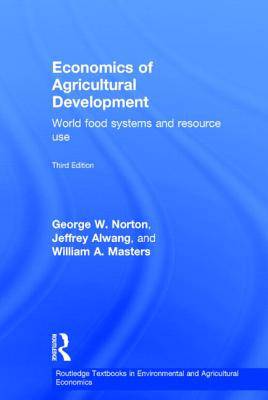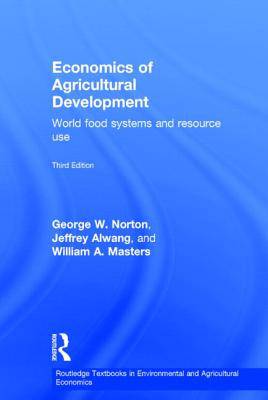
- Retrait gratuit dans votre magasin Club
- 7.000.000 titres dans notre catalogue
- Payer en toute sécurité
- Toujours un magasin près de chez vous
- Retrait gratuit dans votre magasin Club
- 7.000.0000 titres dans notre catalogue
- Payer en toute sécurité
- Toujours un magasin près de chez vous
Economics of Agricultural Development
World Food Systems and Resource Use
George W Norton, Jeffrey Alwang, William A MastersDescription
Economics of Agricultural Development examines the causes, severity, and effects of poverty, population growth, and malnutrition in developing countries. It discusses potential solutions to these problems, progress made in many countries in recent years, and the implications of globalization for agriculture, poverty, and the environment.
Topics covered in the book include:
- Means for utilizing agricultural surpluses to further overall economic development
- The sustainability of the natural resource environment
- Gender issues in relation to agriculture and resource use
- The contribution of agricultural technologies
- The importance of agricultural and macroeconomic policies as related to development and trade, and the successes and failures of such policies
- Actions to encourage more rapid agricultural and economic development
The globalization of trade in goods, services, and capital has been fundamental to changes being experienced in the agricultural and rural sectors of developing countries. It has major implications for the fight against poverty and food insecurity and for environmental sustainability. Recently, agriculture has returned to a position of center stage in the development dialog as food price volatility has increased along with water scarcity, and concerns grow over the effects of climate change on food supply and food security.
This new edition of the essential textbook in the field builds on the 2010 edition and reflects the following developments:
- Growth in foreign demand for land and other natural resources
- Significant progress in agricultural and economic development in some low-income countries while others are being left behind
- Continued growth in demand for higher-valued farm products
This book is essential reading for undergraduate students seeking to understand the economics of agricultural development and the world food system, including environmental and human consequences, international trade, and capital flows.
Spécifications
Parties prenantes
- Auteur(s) :
- Editeur:
Contenu
- Nombre de pages :
- 468
- Langue:
- Anglais
- Collection :
Caractéristiques
- EAN:
- 9780415658225
- Date de parution :
- 25-09-14
- Format:
- Livre relié
- Format numérique:
- Genaaid
- Dimensions :
- 156 mm x 234 mm
- Poids :
- 843 g

Les avis
Nous publions uniquement les avis qui respectent les conditions requises. Consultez nos conditions pour les avis.






